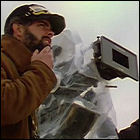 Having score a minor genre cult classic in THX-1138, and a legitimate mainstream hit with American Graffiti, director George Lucas’ new project, a science fiction film called Star Wars, is formally greenlit by 20th Century Fox, initially with a $7,000,000 budget. The project has been in script development at 20th Century Fox since the summer of 1973, with Universal Studios and United Artists having already passed on it, the later because of the anticipated budget requirements for Lucas’ visions of a sci-fi film on a grand scale. Due largely to being personally championed by Alan Ladd, Jr., president of Fox’s film division, the project still has hurdles to overcome, including numerous threats of the studio shutting it down. Filming will begin in 1976.
Having score a minor genre cult classic in THX-1138, and a legitimate mainstream hit with American Graffiti, director George Lucas’ new project, a science fiction film called Star Wars, is formally greenlit by 20th Century Fox, initially with a $7,000,000 budget. The project has been in script development at 20th Century Fox since the summer of 1973, with Universal Studios and United Artists having already passed on it, the later because of the anticipated budget requirements for Lucas’ visions of a sci-fi film on a grand scale. Due largely to being personally championed by Alan Ladd, Jr., president of Fox’s film division, the project still has hurdles to overcome, including numerous threats of the studio shutting it down. Filming will begin in 1976.

 With a budget of $8,000,000 behind him, writer/director George Lucas begins filming his ambitious new science fiction film Star Wars. The location shooting in Tunisia is far from easy, with every thing from dust storms to the language barrier between the filmmakers and the locals impeding progress.
With a budget of $8,000,000 behind him, writer/director George Lucas begins filming his ambitious new science fiction film Star Wars. The location shooting in Tunisia is far from easy, with every thing from dust storms to the language barrier between the filmmakers and the locals impeding progress. After grueling location shooting in Tunisia and lengthy studio filming at Elstree Studios in England, principal photography wraps up on George Lucas’
After grueling location shooting in Tunisia and lengthy studio filming at Elstree Studios in England, principal photography wraps up on George Lucas’ 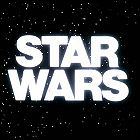 On or around this date in 1976, the very first teaser trailers for an upcoming 20th Century Fox movie called
On or around this date in 1976, the very first teaser trailers for an upcoming 20th Century Fox movie called 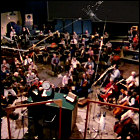 At Anvil Studios in Denham, England, John Williams and the London Symphony Orchestra convene for the first recording session for the Star Wars soundtrack. Over the course of the next 11 days, and with director George Lucas in attendance in the recording booth, all of the music for Lucas’ movie is rehearsed and recorded. Williams and Lucas had been introduced by their mutual friend Steven Spielberg, with whom Williams had worked on 1975’s Jaws (whose score had gone on to win Williams his second Oscar); Lucas’ original plan was to “score” Star Wars entirely with classical pieces. The first scene scored by Williams and the LSO is the rapid-fire chase through the Death Star, culminating in Luke and Princess Leia swinging across a chasm; other pieces recorded on the first day include the death of Obi-Wan Kenobi and the iconic theme music.
At Anvil Studios in Denham, England, John Williams and the London Symphony Orchestra convene for the first recording session for the Star Wars soundtrack. Over the course of the next 11 days, and with director George Lucas in attendance in the recording booth, all of the music for Lucas’ movie is rehearsed and recorded. Williams and Lucas had been introduced by their mutual friend Steven Spielberg, with whom Williams had worked on 1975’s Jaws (whose score had gone on to win Williams his second Oscar); Lucas’ original plan was to “score” Star Wars entirely with classical pieces. The first scene scored by Williams and the LSO is the rapid-fire chase through the Death Star, culminating in Luke and Princess Leia swinging across a chasm; other pieces recorded on the first day include the death of Obi-Wan Kenobi and the iconic theme music.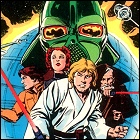 Marvel Comics begins shipping the first issue of its six-issue adaptation of George Lucas’ upcoming film Star Wars, with Lucas reaping the rewards of the licensing arrangement directly since 20th Century Fox has allowed him to keep all merchandising rights to the yet-to-premiere movie. Adapted from the screenplay and edited by Roy Thomas, with artwork by Howard Chaykin, lettering by Jim Novak and colors by Marie Severin, the first six issues offer an interesting visual take on a universe whose visuals were not finished enough for the artist to view ahead of time. After the six issue movie tie-in, Thomas and Chaykin would begin concocting the budding franchise’s first-ever non-film storylines.
Marvel Comics begins shipping the first issue of its six-issue adaptation of George Lucas’ upcoming film Star Wars, with Lucas reaping the rewards of the licensing arrangement directly since 20th Century Fox has allowed him to keep all merchandising rights to the yet-to-premiere movie. Adapted from the screenplay and edited by Roy Thomas, with artwork by Howard Chaykin, lettering by Jim Novak and colors by Marie Severin, the first six issues offer an interesting visual take on a universe whose visuals were not finished enough for the artist to view ahead of time. After the six issue movie tie-in, Thomas and Chaykin would begin concocting the budding franchise’s first-ever non-film storylines. 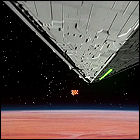 Boasting a story and characters with universal appeal, a magnificent soundtrack, and special effects unlike anything that had been seen before, George Lucas’
Boasting a story and characters with universal appeal, a magnificent soundtrack, and special effects unlike anything that had been seen before, George Lucas’ 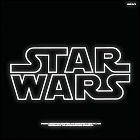 RSO Records releases
RSO Records releases 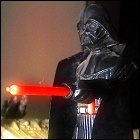 The unexpected runaway success of a dark horse in the summer movie race makes for a mad dash for the toy rights. The winner of that race is Kenner Products, the toy division of cereal maker General Mills, and the prize is the exclusive license to market toys and other products based on Star Wars. Prior to the movie’s release, however, George Lucas has convinced 20th Century Fox to allow him to keep all toy licensing rights, meaning that ongoing licensing payments are made directly to Lucas, providing him with the lion’s share of his future wealth. Kenner executive Bernard Loomis finds himself fighting to convince his own sales team that this movie will attract more than a momentary audience. With the late start and the long lead time on design, tooling and manufacture, Loomis concocts an audacious marketing scheme involving an “empty box” available by Christmas.
The unexpected runaway success of a dark horse in the summer movie race makes for a mad dash for the toy rights. The winner of that race is Kenner Products, the toy division of cereal maker General Mills, and the prize is the exclusive license to market toys and other products based on Star Wars. Prior to the movie’s release, however, George Lucas has convinced 20th Century Fox to allow him to keep all toy licensing rights, meaning that ongoing licensing payments are made directly to Lucas, providing him with the lion’s share of his future wealth. Kenner executive Bernard Loomis finds himself fighting to convince his own sales team that this movie will attract more than a momentary audience. With the late start and the long lead time on design, tooling and manufacture, Loomis concocts an audacious marketing scheme involving an “empty box” available by Christmas. Casblanca Records releases
Casblanca Records releases 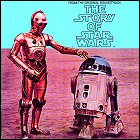 20th Century Fox Records releases
20th Century Fox Records releases 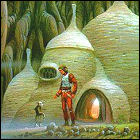 A series of story conferences begin between Star Wars writer/director George Lucas and science fiction writer Leigh Brackett, the first work toward shaping the storyline for an anticipated (but still untitled) Star Wars sequel film. Lucas has brought Brackett on board to contribute new ideas, but she will only submit a first draft before succumbing to cancer. The conferences continue through early December; the eventual product of these early story meetings will be 1980’s
A series of story conferences begin between Star Wars writer/director George Lucas and science fiction writer Leigh Brackett, the first work toward shaping the storyline for an anticipated (but still untitled) Star Wars sequel film. Lucas has brought Brackett on board to contribute new ideas, but she will only submit a first draft before succumbing to cancer. The conferences continue through early December; the eventual product of these early story meetings will be 1980’s 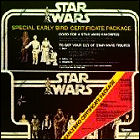 Caught completely off-guard by the seemingly unstoppable runaway success of Star Wars, whose toy license it signed on for earlier in the year, toy manufacturer Kenner does something desperate and unprecedented: it sells a mostly-empty box (contents: the Force?) called the Star Wars Early Bird Kit, containing stickers, pictures, and a card to mail off to receive four figures – Luke, Princess Leia, R2-D2 and Chewbacca – by mail sometime between “February and May 1978.” The delay is needed to ramp up production on the figures, which will also be available at retail in 1978. To the surprise of everyone, including Kenner executive Bernard Loomis, who devised the Early Bird Kit, the result is a runaway sales success story.
Caught completely off-guard by the seemingly unstoppable runaway success of Star Wars, whose toy license it signed on for earlier in the year, toy manufacturer Kenner does something desperate and unprecedented: it sells a mostly-empty box (contents: the Force?) called the Star Wars Early Bird Kit, containing stickers, pictures, and a card to mail off to receive four figures – Luke, Princess Leia, R2-D2 and Chewbacca – by mail sometime between “February and May 1978.” The delay is needed to ramp up production on the figures, which will also be available at retail in 1978. To the surprise of everyone, including Kenner executive Bernard Loomis, who devised the Early Bird Kit, the result is a runaway sales success story.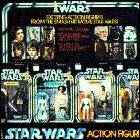 With an incredibly tight lead time (rights were secured some weeks after Star Wars became a box-office hit), General Mills subsidiary
With an incredibly tight lead time (rights were secured some weeks after Star Wars became a box-office hit), General Mills subsidiary  Science fiction writer Leigh Brackett, who is battling cancer, turns in her first and only draft of a screenplay simply titled “Star Wars Sequel” (later to be known as
Science fiction writer Leigh Brackett, who is battling cancer, turns in her first and only draft of a screenplay simply titled “Star Wars Sequel” (later to be known as  “
“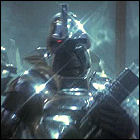 20th Century Fox files a lawsuit against Hollywood rival Universal Pictures over Universal’s upcoming made-for-TV science fiction saga Battlestar Galactica, which 20th Century Fox contends is a copy of its theatrical smash hit Star Wars. Specificially, the studio behind Star Wars claims that the television series infringes on the script for Star Wars, and requests an injunction to bring production to a halt and keep ABC from airing it. The first decision in the case won’t happen until 1980, by which time Battlestar Galactica will already have ended its TV run.
20th Century Fox files a lawsuit against Hollywood rival Universal Pictures over Universal’s upcoming made-for-TV science fiction saga Battlestar Galactica, which 20th Century Fox contends is a copy of its theatrical smash hit Star Wars. Specificially, the studio behind Star Wars claims that the television series infringes on the script for Star Wars, and requests an injunction to bring production to a halt and keep ABC from airing it. The first decision in the case won’t happen until 1980, by which time Battlestar Galactica will already have ended its TV run.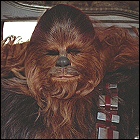 A California judge sides with 20th Century Fox and Kenner Toys in a million-dollar lawsuit against Hong Kong-based toymaker Arco Industries. At issue in the suit is Arco’s “Spacewar” line of action figures, clearly meant to barely resemble such Star Wars characters as Darth Vader, C-3PO and stormtroopers without actually securing the licensing to do so. Kenner contends that the knock-off toys have been eating into its profits, and Arco is far from the only company to suddenly release generic space figures with designs and sculpts that are suspiciously close to elements of the Star Wars universe.
A California judge sides with 20th Century Fox and Kenner Toys in a million-dollar lawsuit against Hong Kong-based toymaker Arco Industries. At issue in the suit is Arco’s “Spacewar” line of action figures, clearly meant to barely resemble such Star Wars characters as Darth Vader, C-3PO and stormtroopers without actually securing the licensing to do so. Kenner contends that the knock-off toys have been eating into its profits, and Arco is far from the only company to suddenly release generic space figures with designs and sculpts that are suspiciously close to elements of the Star Wars universe.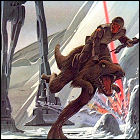 After nearly a year of George Lucas struggling to revise the script for The Empire Strikes Back after the death of his original co-writer, Leigh Brackett, writer Lawrence Kasdan turns in his revisions for the fourth draft of the movie’s screenplay. Kasdan has been brought on board the Star Wars sequel by Lucas, who is co-producing a movie with Steven Spielberg, Raiders Of The Lost Ark, whose script has also been revised by Kasdan – and at this point, Lucas has yet to read Kasdan’s revisions to the Raiders script.
After nearly a year of George Lucas struggling to revise the script for The Empire Strikes Back after the death of his original co-writer, Leigh Brackett, writer Lawrence Kasdan turns in his revisions for the fourth draft of the movie’s screenplay. Kasdan has been brought on board the Star Wars sequel by Lucas, who is co-producing a movie with Steven Spielberg, Raiders Of The Lost Ark, whose script has also been revised by Kasdan – and at this point, Lucas has yet to read Kasdan’s revisions to the Raiders script. Heavily promoted and given a prime-time slot on a Friday night in a world starved for more Star Wars,
Heavily promoted and given a prime-time slot on a Friday night in a world starved for more Star Wars,  Ballantine Books publishes the first of a trilogy of original novels based on the Star Wars characters Han Solo and Chewbacca,
Ballantine Books publishes the first of a trilogy of original novels based on the Star Wars characters Han Solo and Chewbacca,  In contrast to 1977, where no toy licensee had a lock on the right to make Star Wars toys until weeks after the movie’s premiere, Kenner rolls out
In contrast to 1977, where no toy licensee had a lock on the right to make Star Wars toys until weeks after the movie’s premiere, Kenner rolls out 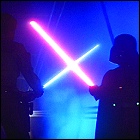 With expectations riding higher than they probably ever will for another sequel in movie history, the first Star Wars sequel,
With expectations riding higher than they probably ever will for another sequel in movie history, the first Star Wars sequel,  Ballantine Books publishes the third in a trilogy of original novels based on the Star Wars characters Han Solo and Chewbacca, Han Solo and the Lost Legacy by Brian Daley. All three books chronicle the misadventures of everyone’s favorite Corellian smuggler and his Wookiee sidekick – and avoid clashing with the recently-released sequel The Empire Strikes Back by setting these events before Star Wars itself.
Ballantine Books publishes the third in a trilogy of original novels based on the Star Wars characters Han Solo and Chewbacca, Han Solo and the Lost Legacy by Brian Daley. All three books chronicle the misadventures of everyone’s favorite Corellian smuggler and his Wookiee sidekick – and avoid clashing with the recently-released sequel The Empire Strikes Back by setting these events before Star Wars itself. 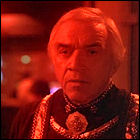 Long after Glen A. Larson’s science fiction series Battlestar Galactica has completed its run, a California judge throws out 20th Century Fox’s 1978 lawsuit, which alleged that Galactica was too close to elements of Star Wars for the studio’s comfort. (Also at issue, though not specifically mentioned in the legal proceedings, was Universal Studios’ hiring of such Star Wars personnel as FX guru John Dykstra and illustrator Ralph McQuarrie to work on Galactica.) Universal’s television series is declared different enough in key areas to not be considered a rip-off – small comfort for the studio, since ABC cancelled had the series earlier in the year. Still, Galactica’s legal status will come into play later, as Universal will later reassert and exploit its rights to the basic Battlestar Galactica storyline in the 21st century. This is not the end of the lawsuit, however; much like both franchises, it too is revived in 1983, and Universal is ordered to pay 20th Century Fox a settlement of nearly a quarter million dollars in 1984.
Long after Glen A. Larson’s science fiction series Battlestar Galactica has completed its run, a California judge throws out 20th Century Fox’s 1978 lawsuit, which alleged that Galactica was too close to elements of Star Wars for the studio’s comfort. (Also at issue, though not specifically mentioned in the legal proceedings, was Universal Studios’ hiring of such Star Wars personnel as FX guru John Dykstra and illustrator Ralph McQuarrie to work on Galactica.) Universal’s television series is declared different enough in key areas to not be considered a rip-off – small comfort for the studio, since ABC cancelled had the series earlier in the year. Still, Galactica’s legal status will come into play later, as Universal will later reassert and exploit its rights to the basic Battlestar Galactica storyline in the 21st century. This is not the end of the lawsuit, however; much like both franchises, it too is revived in 1983, and Universal is ordered to pay 20th Century Fox a settlement of nearly a quarter million dollars in 1984. RSO Records, the label responsible for releasing the Star Wars movie soundtracks to date, releases the
RSO Records, the label responsible for releasing the Star Wars movie soundtracks to date, releases the 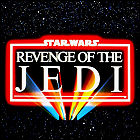 George Lucas completes his handwritten first-draft screenplay for the third Star Wars film, titled
George Lucas completes his handwritten first-draft screenplay for the third Star Wars film, titled  The
The